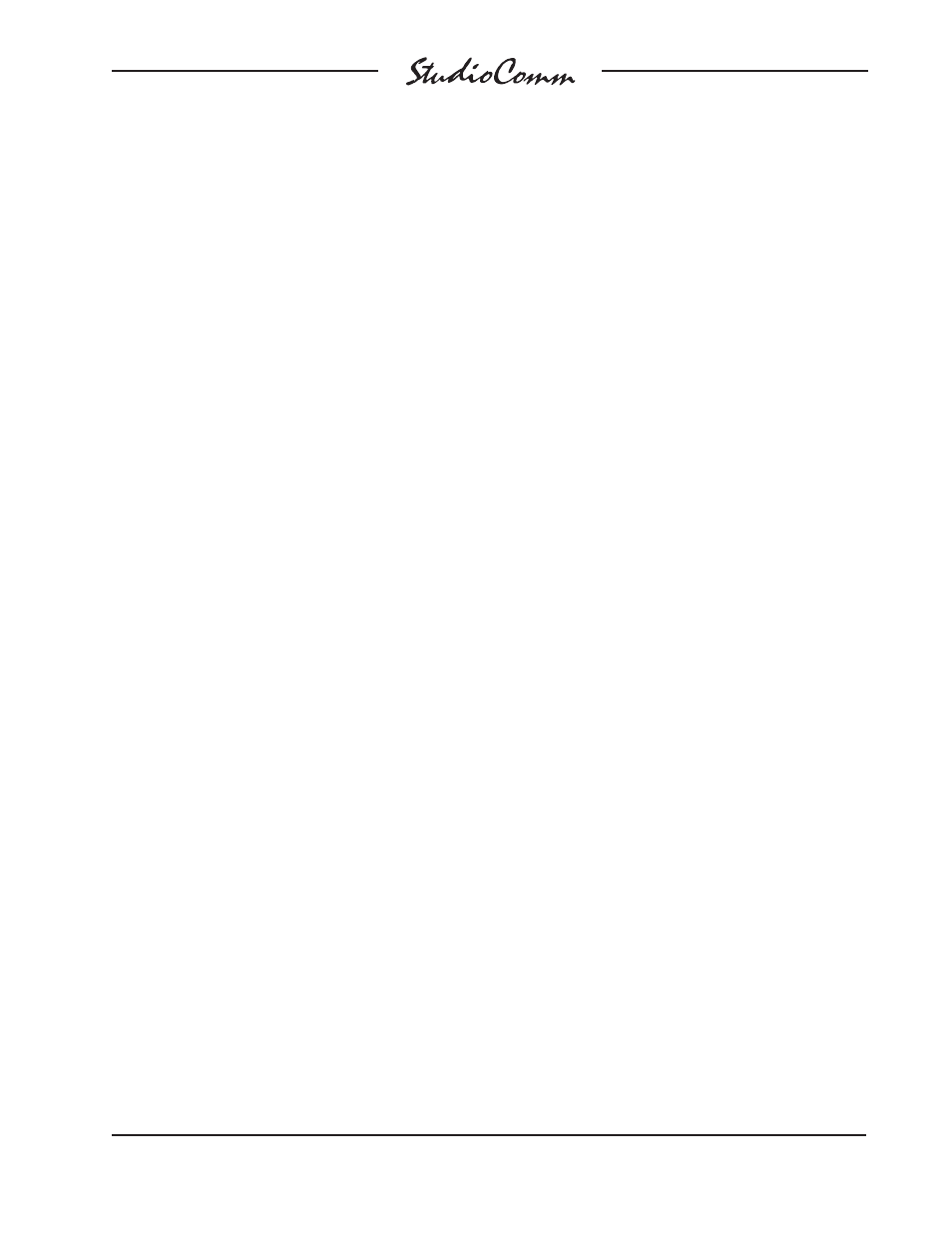Monitor output general functions – Studio Technologies 780-03 V.4.15 User Manual
Page 37

Model 780-03/790 User Guide
Issue 1, April 2015
Studio Technologies, Inc.
Page 37
for Surround
7.1 surround source to be “folded down”
(mixed) to stereo. The resulting signal is re-
produced on the left (L) and right (R) moni-
tor output channels. The To Mono function
allows a 7.1 surround or stereo source to
be converted to a single monaural channel.
The resulting signal is reproduced on the
center (C) monitor output channel.
Using the downmix functions simply re-
quires pressing the desired button. The
buttons are set to always “latch” the func-
tions on and off. An LED, located adja-
cent to each button, will light whenever its
respective function is active. The downmix
functions always impact the post-fader
monitor output. And, depending on the
selected configuration, may also impact
the pre-fader digital monitor output. For
details on the exact actions performed
by the three downmix functions refer to
Appendix C at the end of this user guide.
Monitor Output General
Functions
Four buttons and one rotary control are
associated with the post-fader digital and
analog monitor outputs. The buttons con-
trol operation of the reference level, mute
all, dim, and LFE low-pass filter functions.
In addition the LFE low-pass filter button
can be used to enable the display of the
current sample rate. The rotary level con-
trol is used to manually set the post-fader
digital and analog monitor output levels.
Reference Level
The reference level button sets the post-
fader digital and analog monitor output lev-
els to a preset value. Technical personnel,
using a sound-pressure-level (SPL) meter
and precision signal source, should have
set this level to meet the requirements of
the specific monitoring environment. The
LED associated with the reference level
button will light whenever the function is
active. The 4-digit display will indicate the
reference output level. The StudioComm’s
default reference level is –60.0 dB so “out
of the box” the Model 790 will display
–60.0
when reference level mode is enabled.
How the rotary level control functions
whenever the reference level mode is ac-
tive depends on a configuration setting.
If the auto reference level off function is
disabled turning the rotary level control will
have no impact on the reference level func-
tion; it will remain active. If the auto refer-
ence level off function has been enabled
turning the rotary level control will cause
the reference level function to automati-
cally turn off.
The LED associated with the reference
level button can also serve as a calibra-
tion aid. If the reference level mode is not
active, whenever the monitor output level
is selected to be the same as that stored
for the reference value the reference level
LED will flash. This exact level can be
reached through the use of the rotary level
control, either by itself or through the set-
ting of the rotary level control in conjunc-
tion with the dim function. Whatever path
the monitor output takes to reach the refer-
ence level value, it will cause the reference
level LED to flash!
Mute All
Pressing the mute all button causes the
output channels associated with the digital
and analog monitor outputs to mute. The
4-digit display indicates the mute condi-
tion by showing four dashes (– – – –). The
mute all button is always set to “latch” the
function on and off. The LED associated
